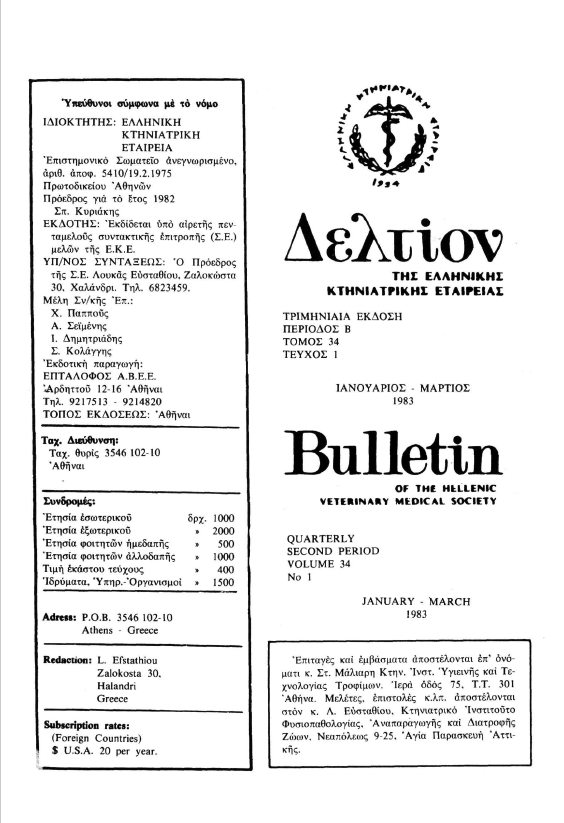Ringworm in rabbits caused by trichophyton mentagrophytes
Abstract
Ringworm enzootics in two big rabbit farms in the Thessaloniki area are reported. The infection first appeared in autumn and continued for many months. In the young weaned animals the disease was severe and the morbidity high (40-50%), While in the adults it was mild and the morbidity low (5-10%). Growth was delayed and the witgt loss was estimated at about 30-40%. Trichophyton mentagrophytes was isolated from skin and hair samples, and from hair, collected from the inside, and from soil collected from the surroundings of the animal house
Article Details
- How to Cite
-
ΜΠΟΥΡΤΖΗ-ΧΑΤΖΟΠΟΥΛΟΥ Ε., & ΚΟΝΤΟΣ Β. (2019). Ringworm in rabbits caused by trichophyton mentagrophytes. Journal of the Hellenic Veterinary Medical Society, 34(1), 72–77. https://doi.org/10.12681/jhvms.21577
- Issue
- Vol. 34 No. 1 (1983)
- Section
- Articles

This work is licensed under a Creative Commons Attribution-NonCommercial 4.0 International License.
Authors who publish with this journal agree to the following terms:
· Authors retain copyright and grant the journal right of first publication with the work simultaneously licensed under a Creative Commons Attribution Non-Commercial License that allows others to share the work with an acknowledgement of the work's authorship and initial publication in this journal.
· Authors are able to enter into separate, additional contractual arrangements for the non-exclusive distribution of the journal's published version of the work (e.g. post it to an institutional repository or publish it in a book), with an acknowledgement of its initial publication in this journal.
· Authors are permitted and encouraged to post their work online (preferably in institutional repositories or on their website) prior to and during the submission process, as it can lead to productive exchanges, as well as earlier and greater citation of published work.



